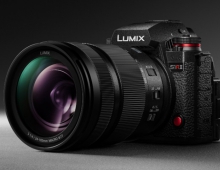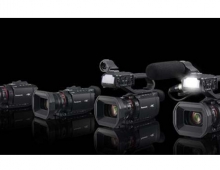
Panasonic, Olympus in d-SLR alliance
Matsushita Electric Industrial and Olympus have formed an alliance to develop digital SLR camera technologies.
They aim to produce high-end models for photographers some time in 2006, after releasing concept models early that year, executives said Thursday.
Each company is looking to produce lenses and bodies that will be interchangeable and sell finished products under their own brand names, said Hiroshi Komiya, director of Olympus, at a press conference in Tokyo.
Recent Olympus flagship models such as the E-1 and the E-300, aimed at professional photographers, have sold well, but the company wants to expand into the semi-professional market while promoting its Four Thirds System technology, said Komiya. The company wants chip and camera design and an anti-blurring technology, amongst other technologies, from Matsushita, he said.
The Four Thirds System is a specification supported by Kodak, Fujifilm., and Sanyo that defines a camera's CCD and lens mount. The standard allows third-party companies to build lenses for cameras using the system.
Matsushita, better known for its Panasonic brand, has a range of proprietary technologies including digital image processing devices and sells a wide range of digital still cameras. It has previously created digital cameras in conjunction with German camera-maker Leica. Unlike Nikon and Canon, it has yet to develop high-end SLR semi-professional models.
Panasonic will expand its range of mass-market Lumix brand cameras into the semi-professional market using the Four Thirds technology, said Fumio Ohtsubo, president of Panasonic AVC Networks.
Competition from new vendors and falling prices are also pushing Panasonic into the move, he said.
"We have had the megapixel battle and now we have to keep on improving specifications," he said.
The companies did not give details about new technologies they are developing, target prices for cameras and lenses, or sales plans for Japan and internationally.
Olympus has worldwide headquarters in Tokyo while Matsushita is based in Osaka, Japan.
Each company is looking to produce lenses and bodies that will be interchangeable and sell finished products under their own brand names, said Hiroshi Komiya, director of Olympus, at a press conference in Tokyo.
Recent Olympus flagship models such as the E-1 and the E-300, aimed at professional photographers, have sold well, but the company wants to expand into the semi-professional market while promoting its Four Thirds System technology, said Komiya. The company wants chip and camera design and an anti-blurring technology, amongst other technologies, from Matsushita, he said.
The Four Thirds System is a specification supported by Kodak, Fujifilm., and Sanyo that defines a camera's CCD and lens mount. The standard allows third-party companies to build lenses for cameras using the system.
Matsushita, better known for its Panasonic brand, has a range of proprietary technologies including digital image processing devices and sells a wide range of digital still cameras. It has previously created digital cameras in conjunction with German camera-maker Leica. Unlike Nikon and Canon, it has yet to develop high-end SLR semi-professional models.
Panasonic will expand its range of mass-market Lumix brand cameras into the semi-professional market using the Four Thirds technology, said Fumio Ohtsubo, president of Panasonic AVC Networks.
Competition from new vendors and falling prices are also pushing Panasonic into the move, he said.
"We have had the megapixel battle and now we have to keep on improving specifications," he said.
The companies did not give details about new technologies they are developing, target prices for cameras and lenses, or sales plans for Japan and internationally.
Olympus has worldwide headquarters in Tokyo while Matsushita is based in Osaka, Japan.





















